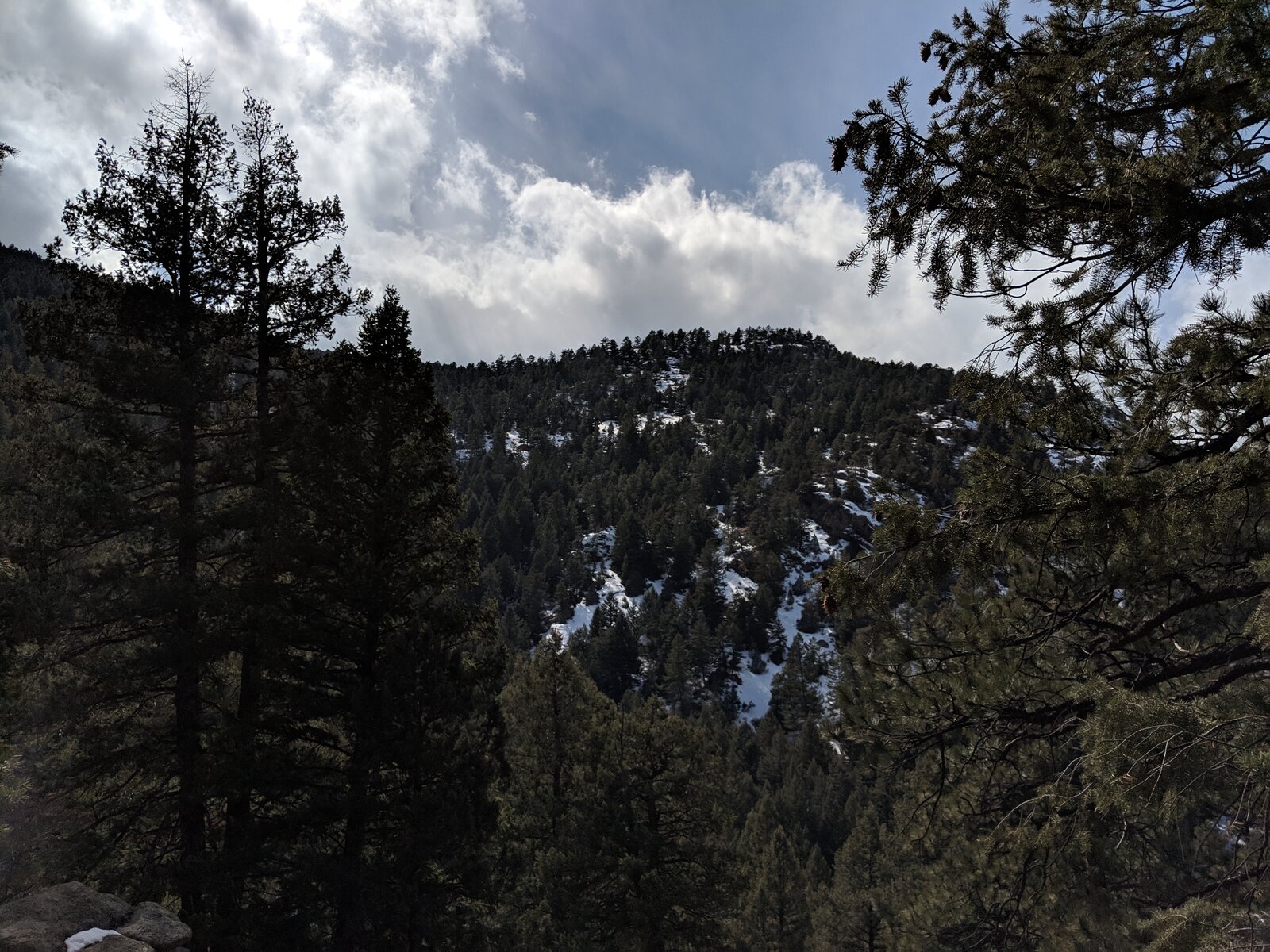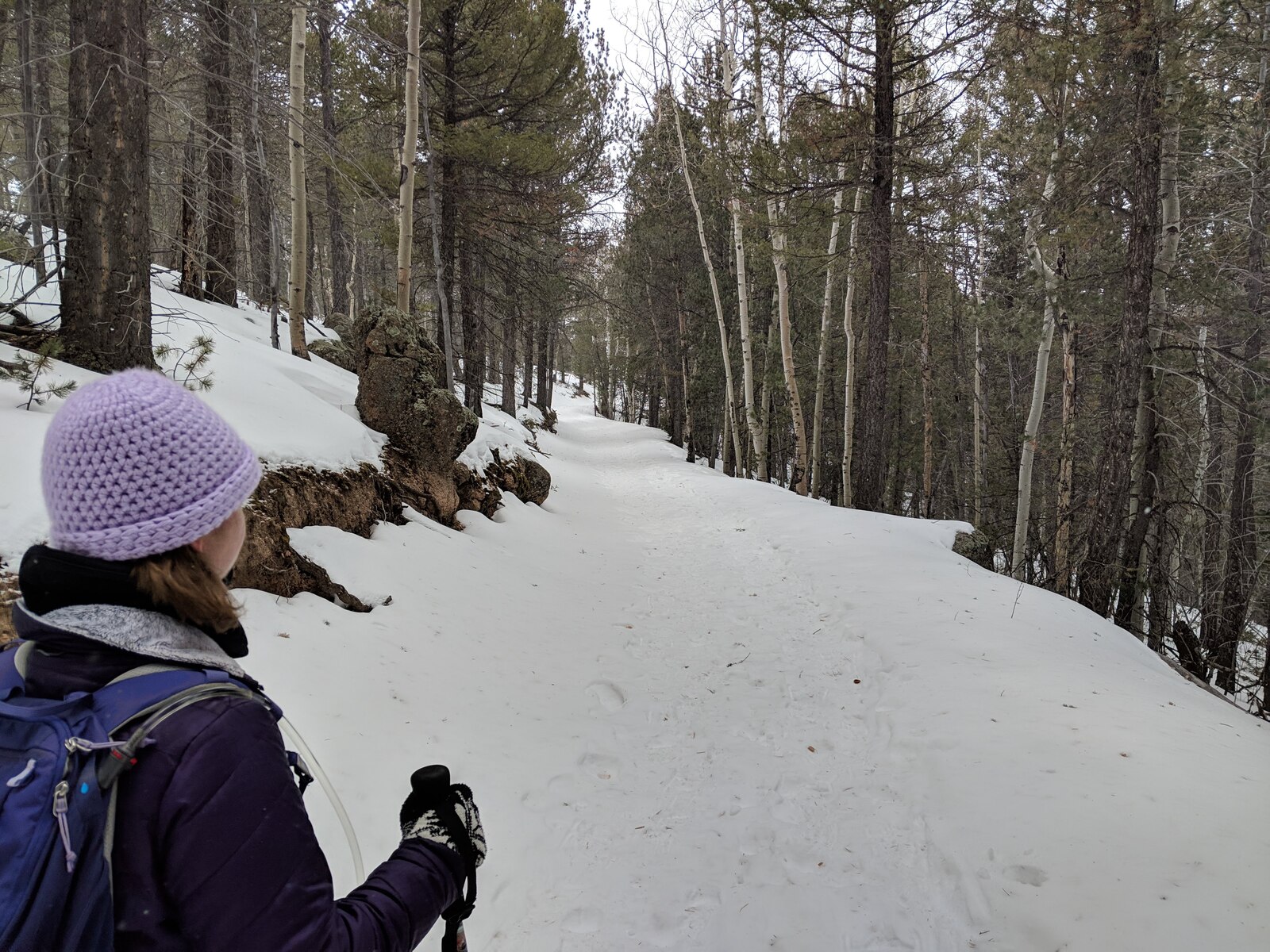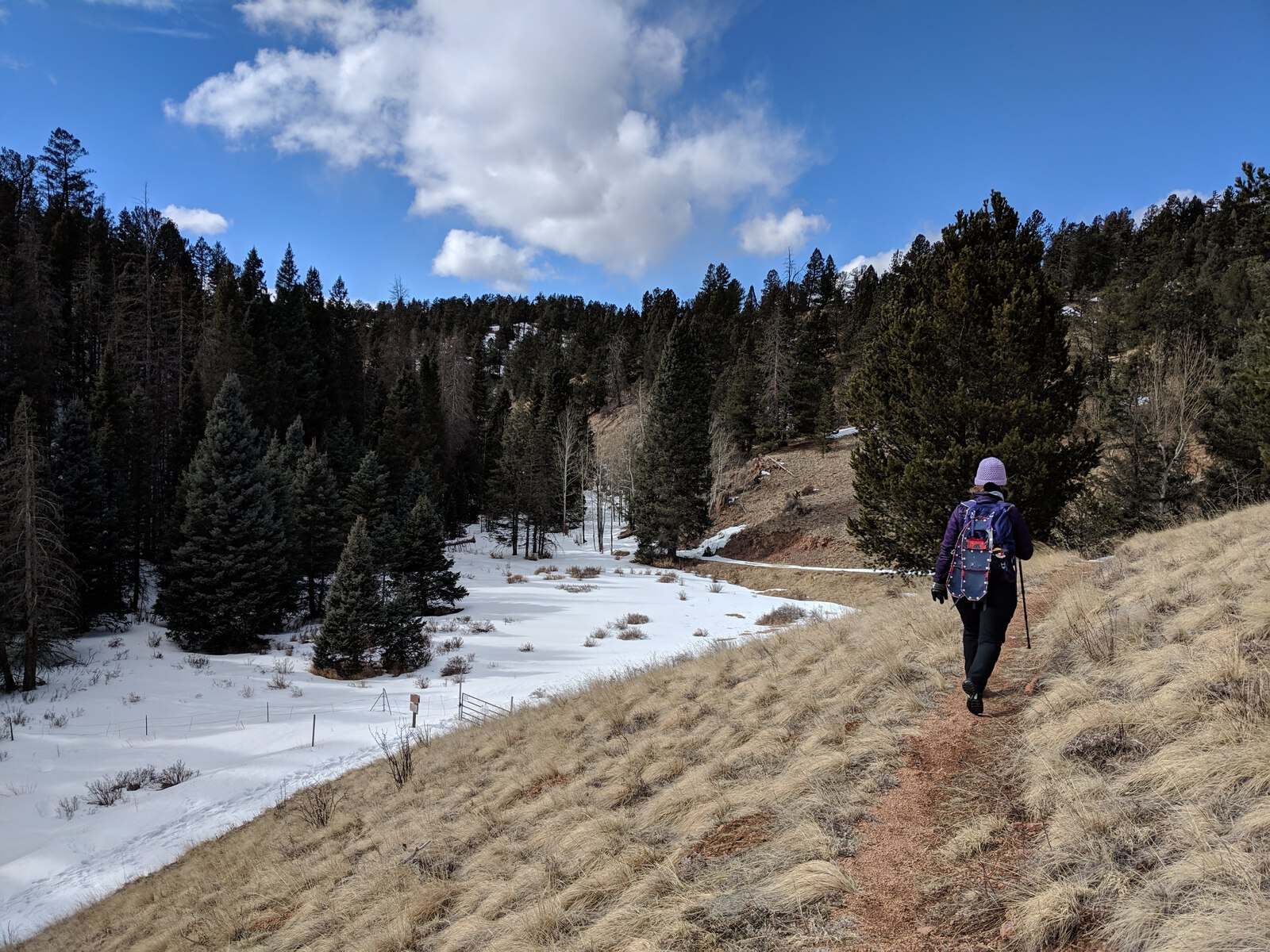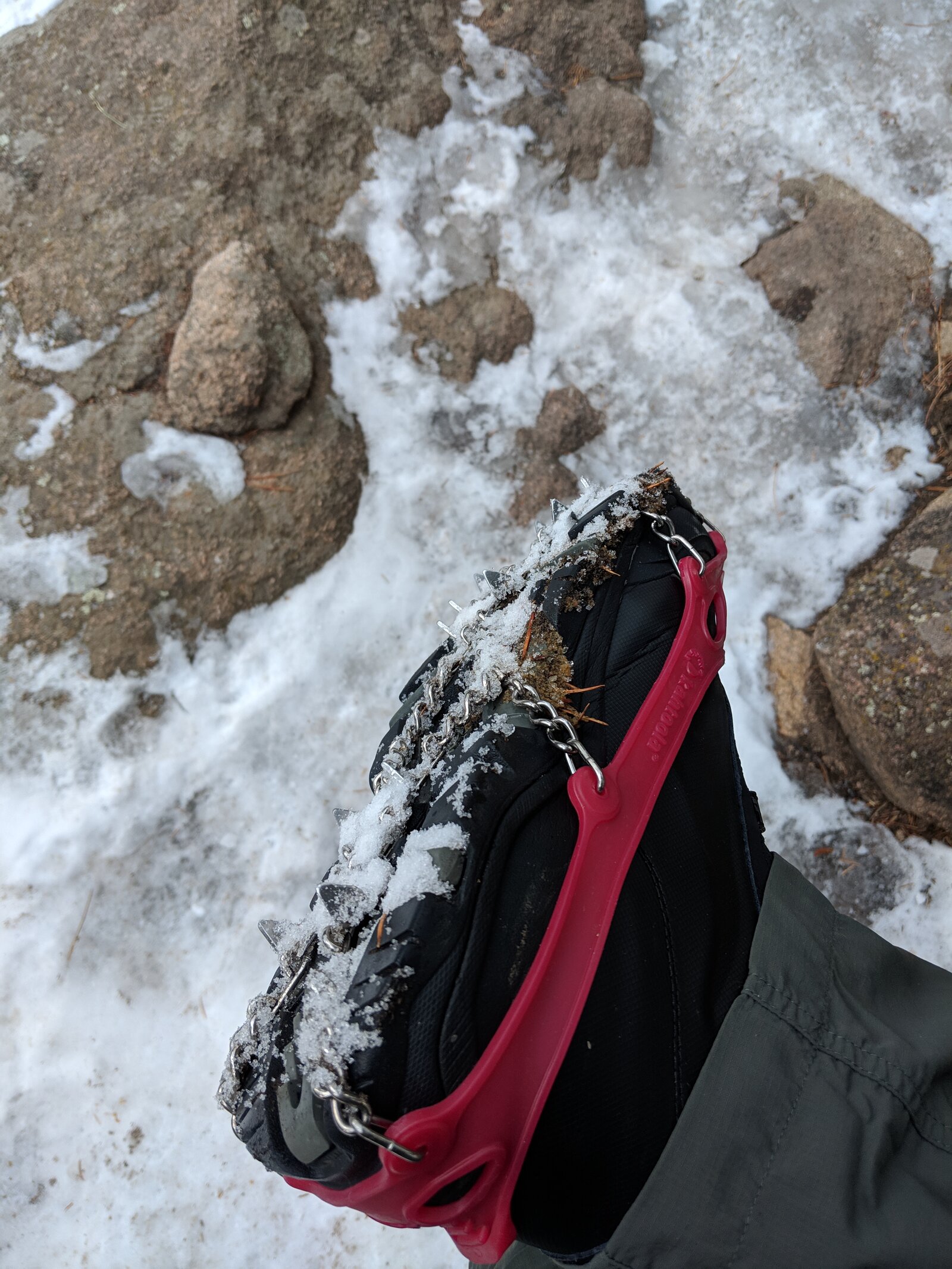4 minutes
Of Snowshoes and Microspikes
It took three winters, but we’ve finally started playing outside when there’s snow on the ground. Here’s what last Sunday afternoon looked like:
In the spring of 2017 (our first in Colorado), we ventured out after the thaw to discover that in-town Denver had been warm and snow-free for weeks, but out in the country “the thaw” was much more of a process. Trails were about 60% dry, and the other 40% was:
- still covered in snow, or
- covered in puddles of freezing meltwater that could be anywhere between 6 inches and 50 feet across (no, that’s not hyperbole), or
- inches-deep, churned mud, or
- any possible combination of the above
That experience taught us the value of snow_boots,_ which are insulated and waterproof. And almost always very grippy. And useful until the snow is melted everywhere, and the trails are dried out.
The next winter we went snow_shoeing_ for the first time. Snowshoes, if you’ve only seen them on TV or on the wall at a kitchy restaurant, are the tennis raquet looking things you strap on your feet to let you walk more easily in snow. In modern-day real life, they’re plastic and/or aluminum things, with aluminum or steel spikes on the bottom, which let you walk more easily on snow and ice. They strap to your snow_boots,_ which are keeping your feet warm and dry..
It was fun, but it was a two hour guided hike at a ski resort. Neither of us had ever been to a ski resort before, so the whole experience was very swirly. Fun, to be sure, but there was a lot to absorb and it was very different from our usual hiking excursions.
This year we went back and did it again (with my Mom, but that’s a whole other story). We were able to concentrate a lot more on the actual snowshoeing part, and decided that we liked it a lot. So the next weekend we rented shoes from REI and went out to a state park for an extended test in more realistic conditions.
This is a picture taken near the beginning of our hike:
We quickly discovered that trails in Colorado, in the winter, are pretty decently packed. Not packed as in “full of people”, but packed as in “we weren’t the first ones to be here after the last snowfall, and the snow on the trail is compacted and no longer powdery”. There are a lot of people out on the trails, all year long.
These are pretty ideal conditions for snowshoes. While they let you walk in deep powder without sinking to your knee/hip, the true power of them is that they let you walk at normal speed on everything from packed powder to ice. Once you learn how to walk without tripping over your own snowshoes, that is!
But there is a downside. This picture is from the same hike. It’s just a little later in the day, and the temperature was actually dropping because a front was moving in. But in a place like Colorado, where there are 300 sunny days a year, the northern expoure of a mountain may have meter high snowdrifts while the southern exposure looks like this:
No snow on the trail for long stretches; just rocks and dirt. Also, this section of the trail is one-foot-in-front-of-the-other narrow. We’d never have made it in snowshoes. And you’ll damage snowshoes by walking over terrain like this anyway.
So as you can see, we lashed them to our packs and carried on. Less than ideal. There was a segment of the trail later on where we really wanted the traction snowshoes provide, but it was too narrow and full of switchbacks to use them.
There is a solution, however: Microspikes. They look like this:
They’re made of an elastomer harness which is connected by stainless steel chains to heel and toe groupings of stainless steel spikes. They’re not mountaineering crampons, and they’re not for climbing. They’re for walking on packed snow and ice, and they are amazing.
They’re also easy to pull on and off, and they cost less than even the cheapest set of snowshoes. If you ever plan to do winter hiking, get yourself a pair. The reduction in leg fatigue from having your feet constantly shift out from under you would be worth the price, and the security of knowing that you’re almost never going to slip makes them a must have.
On our first hike with these, two people asked us how we liked them and another person hiked by who was wearing them. And we only saw about 8 people on that hike.



